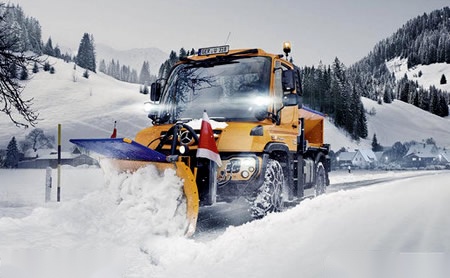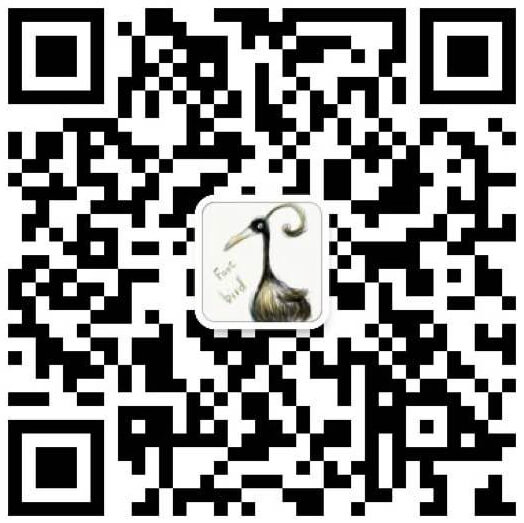乌尼莫克Unimog品牌怎么样 申请店铺
外推网助力乌尼莫克Unimog品牌出海!将品牌入驻外推网,定制乌尼莫克Unimog品牌推广信息,可以显著提高乌尼莫克Unimog产品曝光,简直是跨境电商爆单神器!目前仅需1000元/年哦~

乌尼莫克Unimog,始创于1946年,奔驰汽车公司旗下品牌,被誉为“越野之王”的著名越野车品牌,世界上性能较佳的多用途越野车
乌尼莫克(Unimog)是由戴姆勒-奔驰在第二次世界大战之后设计的军民两用卡车系列,现在属于戴姆勒集团旗下的梅塞德斯-奔驰。Unimog这个名字来源于德文“Universal-Motor-Gerät”,意思是泛用自走机具。它较早的设计目的是低速农用牵引机。
由于采用了门式传动(portal gear)的技术,使得轮轴和传动轴的位置要高于轮胎中心,因此乌尼莫克拥有比一般高机动多用途轮式车(HMMWV)更高的离地距离。乌尼莫克还使用了柔性车架,车轮在垂直方向上有较大的活动空间,这样当车辆在异常崎岖的地形甚至是一米高的石头上行驶时仍能保持较为舒适的驾驶状态。
一车多用是乌尼莫克的重要特点。在欧洲,乌尼莫克被广泛地用于民间,包括搭载修理路牌、路灯的升降机和牵引各种农用机械。在工地,它可以用于拖动推土机、挖土转台、吊机等,或牵引20轮大平板车运送30吨推土机或挖土机。另外,在火车维修中心还可被当作短距离牵引车头来使用。同时,由于乌尼莫克优良的越野性能,因此包括德国、瑞士、南非和新西兰在内的80多个国家都把它用于军事用途,例如改装成装甲运兵车或牵引坦克运载车。
乌尼莫克的创造者阿尔贝特·弗里德里希(Albert Friedrich)原本是戴姆勒-奔驰旗下航空发动机设计部门的主脑。他在第二次世界大战期间兴起一个想要设计辆小型牵引机的灵感,并且在1945年战争结束后立刻着手开始新车的设计。虽然一开始时乌尼莫克是以农耕机具的身分起造的,但它在设计上与传统的牵引机不同。在许多协助弗里德里希开发新车的人士中,曾在战前于戴姆勒-奔驰发动机开发部门工作、但战后却成为农夫的海因里希·勒斯勒尔(Heinrich Rößler)是贡献较大的人,提供了许多关于农耕事物的宝贵经验。
弗里德里希当初所描绘的乌尼莫克是一辆“发动机动力的农业用途泛用机具”(engine-powered universally applicable machine for agriculture),但在那时,“Unimog”这个车名根本尚未成型。这辆开发中的新车使用四轮驱动系统,有四个等尺码的车轮(一般牵引机的前后轴上之车轮往往是不同大小),可以当作牵引机、农机载台、固定工作平台与输送车使用,输出较大可达25hp(匹马力),拥有六速变速箱,目标车速50km/h(公里/小时)。
在初步的概念确定后,弗里德里希与当时正占领德国的美军接触,因为在那时代德国境内任何工业器具的生产,都需先经过盟军的同意取得生产许可。弗里德里希选择了位于施瓦本格明德的艾哈德先生与子公司(Messrs. Erhard & Sons)作为开发原型车的合作对象,后者是一家金器与银器的制造商。
1946年下半弗里德里希成功地制造出试作车,有着倾斜的车头发动机盖,软顶的驾驶舱,与舱后的载货平台,整体的造型已经与后来实际量产的车辆非常一致。在此同时,新车也获得正式的命名——Universal-Motor-Gerät(泛用自走机具,universally applicable motorised machine),缩写就称为“Unimog”。
乌尼莫克试作车在1947年春天时首度正式对外亮相,但直到那时为止,工程师们仍未来得及替它找到一具适用的柴油发动机。菲德利希等人希望能够在新车上搭载戴姆勒-奔驰所开发的OM 636型发动机,但当试作车完工时,这具发动机甚至还没决定要量产。
在解决了发动机供应问题后,新车原本应该可以正式迈入量产阶段,但新的问题却再度阻挠了进度。虽然艾哈德这家公司很尽力地协助了新车的开发,但由于该公司本身并非汽车或大型机械制造专业,根本没有适当的产能帮助新车量产,因此弗里德里希被迫要寻找新的合作伙伴。当时许多造车厂都对乌尼莫克都兴趣缺缺,他们后来找到位于格平根的机械工具制造商保灵格(Boehringer),并于1947年开始制造乌尼莫克。而在1948年于法兰克福举行的德国农业展中,乌尼莫克量产车正式在大众面前亮相。
1948年8月,乌尼莫克开始正式大规模投产,由于保灵格本身也非专业的汽车制造商,因此弗里德里希的团队除了必须负责工程开发外,也必须另寻人力建立乌尼莫克的专属销售体系。
一直到1950年夏天为止,保灵格一共生产了约600辆的乌尼莫克,这些乌尼莫克悬挂的是一个上面有“U”字形牛角的牛头厂徽。但,新车的畅销暴露出制造商本身产能不足的困境,而提升产能所需的高额投资却又非保灵格这样的小厂足以负担。在这样的背景下,弗里德里希不得不将整个开发团队,新车计划,技术专利,与新成立的销售体系全部卖给戴姆勒-奔驰,该公司在1950年秋季正式接手乌尼莫克,将生产线移到他们位于加格瑙的卡车厂,并一直持续生产到今日。
Unimog, founded in 1946, is a brand of Mercedes Benz automobile company, known as the "king of cross-country" famous cross-country vehicle brand. Unimog, the world's better performance multi-purpose cross-country vehicle, is a dual-use truck series designed by Daimler Benz after the Second World War, and now belongs to Mercedes Benz under Daimler group. The name Unimog comes from German "universal motor Ger ä T", which means universal self-propelled machine. Its early design purpose is low-speed agricultural tractor. Due to the adoption of portal gear technology, the position of the wheel axle and transmission shaft is higher than the center of the tire, so unimok has a higher ground distance than HMMWV. Unimok also uses a flexible frame, with large vertical movement space for wheels, so that the vehicle can still maintain a comfortable driving state when driving on the extremely rugged terrain or even a high stone. One car with multiple uses is an important feature of unimoc. In Europe, unimok is widely used in the civil society, including carrying the elevator to repair the road signs and street lights and towing various agricultural machinery. At the construction site, it can be used to drag bulldozers, earth digging turntables, cranes, etc., or drag 20 wheel large flat cars to transport 30 ton bulldozers or excavators. In addition, it can also be used as a short distance tractor in the train maintenance center. At the same time, due to its excellent off-road performance, more than 80 countries, including Germany, Switzerland, South Africa and New Zealand, have used it for military purposes, such as refitting it into armored personnel carriers or towing tank carriers. Ubert Friedrich, the creator of unimocks, was the head of Daimler Benz's Aeroengine Design Division. He was inspired by a desire to design a small tractor during World War II, and set about designing a new car as soon as the war ended in 1945. Although originally built as an agricultural implement, the unimok is different from the traditional tractor in design. Among many people who helped Friedrich develop new cars, Heinrich R ö Diller, who worked in the engine development department of Daimler Benz before the war but became a farmer after the war, was a great contributor and provided many valuable experiences on farming. Friedrich originally described the Unimog as an "engine powered universal applicable machine for agricultural culture", but at that time, the name of "Unimog" was not formed at all. The new vehicle under development uses four-wheel drive system, with four wheels of the same size (the wheels on the front and rear axles of the tractor are usually of different sizes). It can be used as a tractor, agricultural machinery carrier, fixed working platform and transport vehicle, with an output of up to 25HP (horsepower), a six speed gearbox and a target speed of 50km / h (km / h). After the initial concept was established, Friedrich contacted with the US Army who was occupying Germany at that time, because the production of any industrial apparatus in Germany in that time required the consent of the Allied forces to obtain the production license. Friedrich has chosen Messrs. Erhard & Sons, a maker of gold and silver, to partner in the development of prototype cars. In the second half of 1946, Friedrich successfully manufactured the trial car, which has a sloping engine hood, a soft top cockpit, and a cargo platform behind the cabin. The overall shape has been very consistent with the actual mass production vehicles later. At the same time, the new car has also been officially named universal motor Ger ä t (universal movable motorcycle), abbreviated as "Unimog". For the first time in the spring of 1947, the unimok test car officially appeared, but until then, engineers still had to find a suitable diesel engine for it. Federich and others hope to be able to carry the om636 engine developed by Daimler Benz on the new car, but when the test car is completed, the engine has not even decided to mass production. After solving the problem of engine supply, the new car should be able to formally enter the stage of mass production, but the new problem once again hindered the progress. Although the company did its best to assist in the development of new cars, Friedrich was forced to find new partners because the company itself was not a major in automobile or large-scale machinery manufacturing and did not have the appropriate capacity to help mass production of new cars. At that time, many car manufacturers were lack of interest in unimocks. They later found Boehringer, a mechanical tool manufacturer in gepingen, and began to manufacture unimocks in 1947. In the German agricultural exhibition held in Frankfurt in 1948, Uni Mok mass production vehicles officially appeared in front of the public. In August 1948, unimok began to be put into production on a large scale. As baolinger itself is not a professional automobile manufacturer, Friedrich's team must be responsible for engineering development, but also find other personnel to establish unimok's exclusive sales system. Up to the summer of 1950, baolinger had produced about 600 vehicles of unimocks, which hung a cow head factory emblem with "U" shaped horns. However, the new car's best-selling exposes the manufacturer's own shortage of production capacity, and the high investment needed to increase production capacity is not enough for small factories like baolingge. In this context, Friedrich had to sell the whole development team, the new car plan, the technical patents, and the newly established sales system to Daimler Benz. In the autumn of 1950, the company officially took over the unimok, moved the production line to their truck factory in gagnau, and continues to produce to this day.
本文链接: https://brand.waitui.com/370ad29ec.html 联系电话:请联系客服添加 联系邮箱:请联系客服添加


















 浙公网安备 33011802001999号
浙公网安备 33011802001999号
